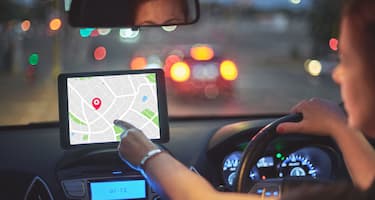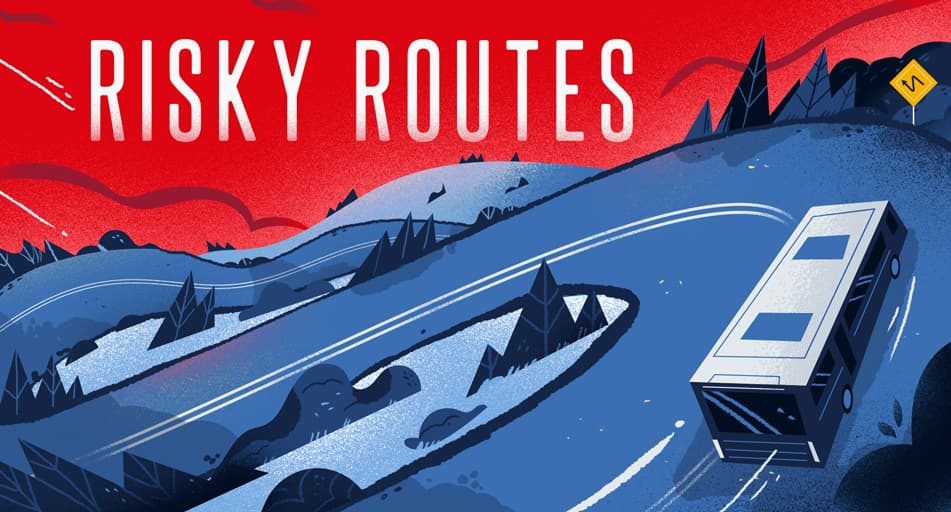It’s considered one of the riskiest behaviours on the road, but how much do we really know about fatigued driving?
To better understand how Australians feel about getting behind the wheel of a car when they’re tired, we surveyed more than 1,000 Australian drivers aged 18 and over.
We analysed the results and compared them to our Fatigued Driving Survey and Statistics 2022 to explore the trends, attitudes and behaviours of everyday drivers. [1]
Quick Stats
- More than a third of respondents have experienced a microsleep while driving.
- Younger drivers who were surveyed aged 18 to 27 were more likely to play music and drink or snack if they were tired while driving, rather than pull over for a break.
- More than a third of respondents said driving while highly fatigued was the most dangerous state for a driver to be in.
What is fatigued driving?
Fatigued driving is more than just being a bit sleepy behind the wheel. In terms of road safety, it can be one of the riskiest ways to drive a car.
Fatigued driving contributes to around 20% to 30% of all fatal road crashes and severe injuries in some parts of Australia. Plus, being tired is four times more likely than drugs or alcohol to contribute to impairment on the road. [2]
Being tired while driving can cause you to be less alert and have:
- Slower reaction time
- Shorter attention span
- Less effective memory
- Narrowed attention
- Less effective reasoning
- Poorer decision making [2]
It can also result in microsleeps which are periods of light sleep that can last anywhere between 2 and 20 seconds. You typically can’t control when these microsleeps might happen which makes it difficult to stay safe while driving. [3]
Early Warning Signs of Fatigue
Taking early action could save you from falling into a microsleep while driving.
To do this, it’s important to understand the early signs of fatigue including:
- Yawning
- Eyes glazing over, going out of focus or closing for a moment
- Blinking more than usual
- Having trouble keeping your head up
- Forgetting parts of the drive
- Droning and humming in ears
- Stiffness, cramps, aches or pains
- Starting to daydream
- Having a slower reaction time
- Changing speed without realising
- Drifting across lanes or in the lane [4]
Reducing the Risk of Fatigued Driving
There’s only one effective way to reduce tiredness and that’s by sleeping. But there are several things you can do to make sure you’re always at the top of your game when getting behind the wheel.
Before Driving
Before you drive, make sure you’ve had a good night’s sleep and are well-rested. You might also want to check that any medication you’re taking won’t impair your driving or make you feel drowsy.
Take some time to plan your drive so that you:
- Avoid driving at night when you’re naturally tired
- Drive with someone else so you can switch
- Avoid driving long distances after work or after a tiring day
- Allow time for regular breaks
- Plan another lift home if you think you’ll be too tired [5]
When Driving
To regain alertness when you’re driving, you can:
- Pull over in a safe space for a break
- Pull over and take a nap for at least 20 minutes
- Swap drivers where possible
- Stop for a coffee if you’re on a short drive
- Continue taking regular breaks even if you don’t feel tired [5]
Fatigued Driving Survey Results
Find out more about how Australian drivers feel about fatigued driving.
Have you ever experienced a “microsleep” or fatigued moment you couldn’t remember while driving?^
^Due to how the figures are rounded within the survey data, numbers may not add up to exactly 100%
More than a third of Australian respondents said they’ve experienced a microsleep or fatigued moment that they couldn’t remember while driving.
This is up slightly from the 30.1% of respondents who said they had experienced a microsleep while driving in 2022. [1]
Male respondents were more likely than female respondents to say they had experienced a microsleep or fatigued moment while behind the wheel. This is according to 42.3% of men who were surveyed compared to 34.5% of women.
Meanwhile, 44% of those aged 28 to 37 who were surveyed said they’d had a microsleep or fatigued moment while driving, which was the highest percentage of all the age groups surveyed.
How long do you think a typical “microsleep” lasts?^
^Due to how the figures are rounded within the survey data, numbers may not add up to exactly 100%
Of those surveyed, 83.6% correctly answered that a microsleep lasts less than 30 seconds.
This is up from our results in 2022 when just over half of the respondents answered that they lasted less than 30 seconds. [1]
Those aged 18 to 27 were the least likely to know the right answer, with just 56.9% choosing the correct response while 29.3% said they believed a microsleep lasted less than five minutes.
What is the most amount of time that you have driven without taking a break?^
^Due to how the figures are rounded within the survey data, numbers may not add up to exactly 100%
Almost half of those surveyed said they’ve driven two to four hours without taking a break, while 23.3% said they’ve driven four to six hours without stopping.
It’s generally recommended drivers stop every two hours for at least 15 minutes to avoid becoming tired while driving. [4]
Women who were surveyed were twice as likely as men surveyed to only drive for a maximum of two hours without a break.
Meanwhile, male respondents were more likely to drive further without stopping than female respondents with 17.8% saying they had driven more than six hours without a break compared to 5.6% of women.
Queensland drivers who were surveyed were the most likely state to drive more than six hours without a break, according to 18.3% of respondents.
If you drive at night or when feeling fatigued, what techniques will you regularly use to stay alert?*
*Respondents were able to select multiple answers, meaning values may not add up to 100%
The majority of those surveyed said they would pull over for a break if they were feeling tired while driving.
The second most common technique used by respondents was to play music to keep them alert while driving, according to more than half of those surveyed.
Drivers surveyed aged 58 to 67 were much more likely than drivers surveyed aged 18 to 27 to pull over for a break if they were getting tired while driving.
Of those aged 18 to 27 who were surveyed, the most common technique to combat tiredness behind the wheel was to play music, followed by switching drivers and drinking water or snacking.
Meanwhile, those surveyed in New South Wales were the most likely to pull over for a break if they were getting tired, closely followed by South Australian respondents.
Which of these would you feel is the most dangerous state for a driver to be in?^
^Due to how the figures are rounded within the survey data, numbers may not add up to exactly 100%.
More than a third of those surveyed said that driving while highly fatigued was the most dangerous state for a driver to be in.
According to those surveyed, this was the second most dangerous state for drivers to be in behind driving under the influence.
Respondents in New South Wales were the only respondents from any state or territory to say that being highly fatigued was the most dangerous state to be driving in, ranking it above driving under the influence.
What is the furthest you would feel comfortable driving if you were feeling tired?^
^Due to how the figures are rounded within the survey data, numbers may not add up to exactly 100%.
Male respondents were slightly more likely than female respondents to say they would be comfortable driving tired for longer periods, including from 10 minutes to more than an hour.
More than a third of respondents aged 58 to 75 said they wouldn’t be comfortable driving at all if they were feeling tired.
Key Takeaways
Increased number of drivers having microsleeps behind the wheel
In 2023, more drivers who were surveyed admitted to microsleeping when behind the wheel than the year prior. This increased from 30.1% in 2022 to 37.8% in 2023. [1]
However, it comes as education on microsleeps appears to be improving with the number of people correctly answering that a microsleep typically lasts less than 30 seconds increasing from 59.1% in 2022 to 83.6% in 2023.
Younger drivers are less likely to take a break from driving when tired
Younger drivers who were surveyed aged 18 to 27 said their most common technique to stay alert behind the wheel was to play music.
They were more likely to play music, switch drivers, and drink water or eat a snack than they were to take a break.
This is compared to drivers surveyed aged 58 to 67 where pulling over for a break was the most common technique to fight tiredness while driving, according to 69.8% of respondents.
Drivers recognise the seriousness of fatigued driving
More than a third of respondents said driving while highly fatigued was the most dangerous state for a driver to be in.
Despite this, respondents still said they drove for more than the recommended two hours without taking a break. Almost a quarter of respondents said they drove four to six hours without stopping, while almost half said they drove up to four hours without a break.






